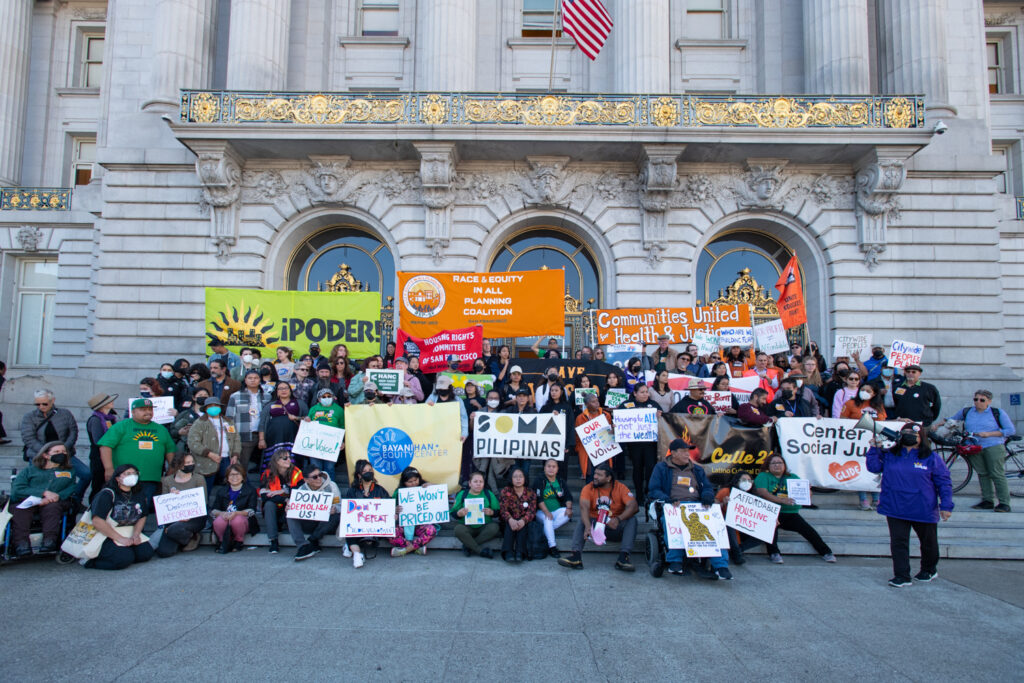San Francisco is so far from meeting its state-mandated goals for extremely low-income housing that unless there’s a profound and dramatic shift in funding, the city will fail miserably.
That’s the conclusion I got from a hearing at the Land Use and Transportation Committee today. It’s the latest example of how both the legally binding state goals and the city’s promise to meet them in the latest Housing Element are a complete farce.

Sup. Aaron Peskin called for the hearing to ask the Mayor’s Office of Housing how the city is going to fulfill its goal of creating 13,000 units of housing in the next six years for people who make less than about $44,000 a year for a family of four.
There are, city figures show, at least 60,000 San Franciscans in that income range.
In the past five years, the city has built fewer than 400 units that those folks can afford.
And yet, the Planning Commission, the mayor, and the supes have all signed off on a housing element that mandates the equivalent of 2,100 new units a year (the state-mandated goals are over an eight-year period, but we’ve already used up almost two of those years).
Peskin:
Is there a comprehensive plan about how we’re going to build these 13,900 and whatever it is, 13,981 units? Or is it just kind of the aspirations that are set out in those policy actions?
Dan Adams, the director of the Mayor’s Office of Housing:
I think aspirations is the right word. I think if the if the subsidy needs weren’t so great … we would need to make a detailed and concrete plan for building these units.
In other words: There’s no way the city has the money to make this housing happen, the state isn’t giving cities the money to fulfill what Peskin called an unfunded mandate, and the federal money isn’t enough to fill the gap.
Peskin and Sup. Dean Preston pressed Adams for a number: What would it cost to meet these goals? Adams said the best he could estimate is about $4 billion in capital expenses and another $2.6 billion in operating expenses over the next ten years.
That’s just for a small part of the RHNA mandates.
Adams made it clear that his department is able to meet and coordinate with other city agencies, that the obstacles aren’t bureaucratic. It’s just money.
Dozens of speakers testified about the desperate need for this level of housing. One example:
For six years we lived in a basement where the conditions were not appropriate for a family of four. For example, there were many insects and rats. My family and I were constantly uncomfortable because of all the bites and stings. Later, we moved to a studio that still did not satisfy our needs due to how small it was. Across eight long years, we applied to the looking for a better option but my income still was not sufficient for to cover the high cost of the rent.
Peskin:
There’s been an extraordinary amount of the conversation, and we’ve made some pretty massive policy adjustments as it relates to the economic feasibility [of market-rate housing] and reducing the percentage of on-site inclusionary requirements, streamlining things, adding zoning capacity, but none of that results in a single ELA unit.
I think it’s high time that this Board of Supervisors and the administration and the various manifestations of the executive branc have a frank policy conversation about the policy choices that are before us in this budget. We have as a city, as a society, we made choices about setting funds aside for libraries, for parks, and I think we should be having a frank conversation about doing that in the realm of extremely low income operating subsidies.
I could add: We also, as a city, as a state, as a society, need a frank discussion about how to tax the very rich who have helped create this problem, so we can actually solve it.



